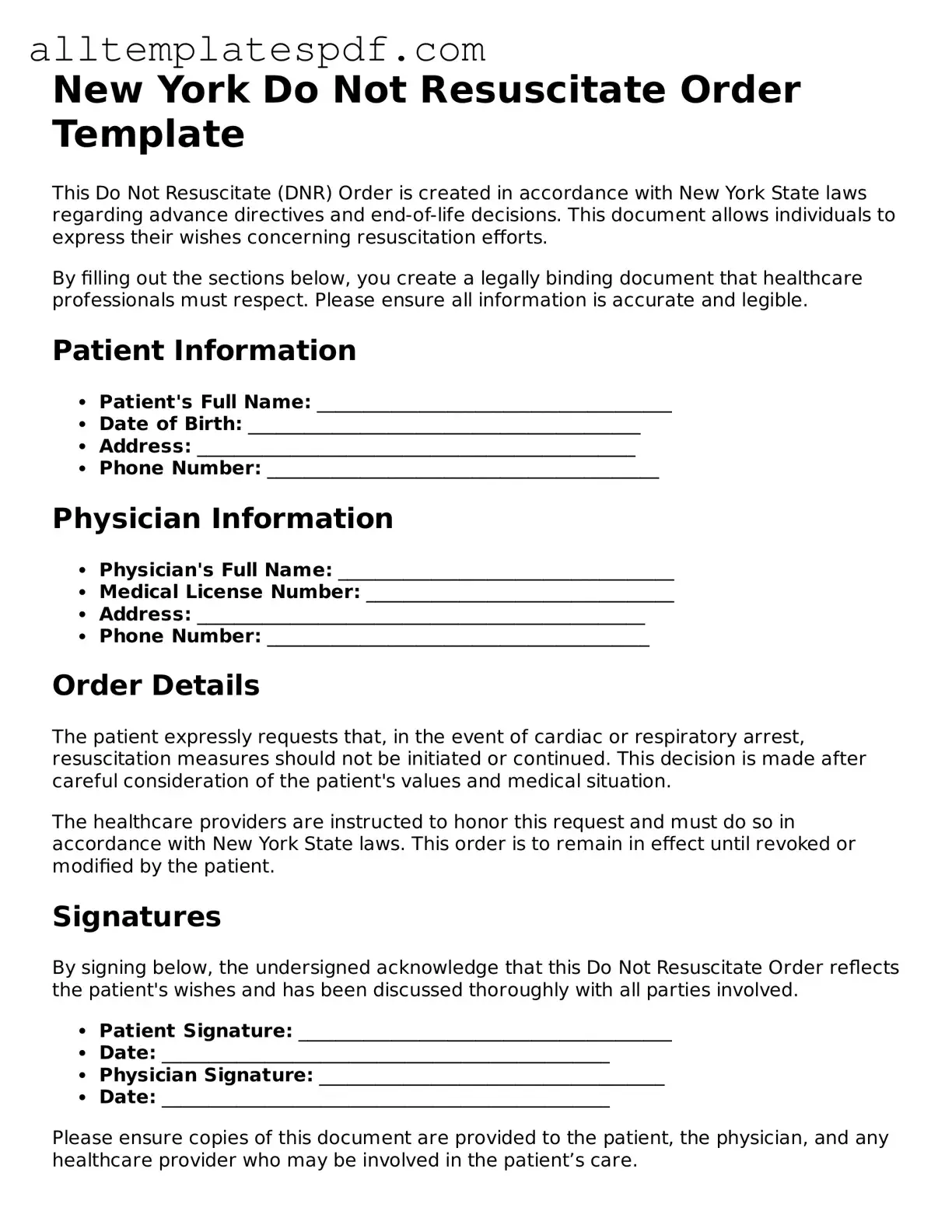Blank Do Not Resuscitate Order Template for the State of New York
A Do Not Resuscitate (DNR) Order is a legal document that allows individuals to refuse resuscitation efforts in the event of cardiac or respiratory arrest. This form is crucial for ensuring that a person's healthcare wishes are respected during critical medical situations. To learn more and take the necessary steps to complete this form, please click the button below.
Open Editor
